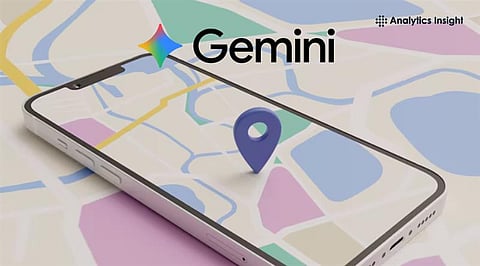

Google has started to integrate its Gemini AI system into Google Maps, bringing new voice-driven features and contextual assistant capabilities to millions of users throughout navigation modes. It is the first significant step toward making Gemini the key driver behind Google’s mapping and mobility tools in the future.
Earlier this month, Google confirmed that Gemini would gradually become the brain of Maps’ voice assistant feature. That rollout is now official. Users across car, walking, two-wheeler, and public transport navigation can now access Gemini directly inside Maps.
Along with the change, the familiar multicolored microphone icon has been replaced with the Gemini symbol to signal a move from the older voice assistant to something more powerful and context-aware. Google said Maps will automatically use the language and voice preferences linked to the user’s Google account, ensuring consistency across services.
Despite the upgrade, activation still requires ‘Hey Google’ hot word before commands can be used.
Also Read: Google Maps Gets a Vision Upgrade, Polestar 4 Debuts Live Lane Guidance
One of the strong points of Gemini is that it has enhanced conversational context. One can ask layered questions now without repeating details. For example, if a driver wants to know which fuel stations are on the current route and says ‘Take me there’, then Gemini will process the intent without asking for the full query again.
It also brings up information from across connected Google services on nearby food options, EV chargers, parking areas, and fuel stations, which makes mid-journey decisions faster and less distracting.
In addition, Gemini now supports reporting. Drivers can alert Google Maps to roadblocks, incidents, and closures, while also receiving warnings about congestion or delays before a trip begins. Google says this should improve route planning and overall situational awareness for travellers.
Google has introduced landmark-based navigation, a feature that shifts instructions from meters and turns to recognizable physical cues. Instead of saying ‘turn right in 200 meters’, Maps may say ‘turn right after the blue church on your right.’ For now, the functionality is restricted to the US, with a broader rollout expected later.
New traffic alerts also include better, real-time updates to help users route around disruptions.
Gemini’s presence also continues to expand with new integrations into the Lens in Maps tool. Using the search bar, users can point their phone camera at a location and immediately begin an interactive, AI-driven inquiry about the place.
It is currently available in the US on both Android and iOS. As Google continues weaving Gemini into its ecosystem, Maps is set for its biggest AI-driven evolution yet, changing how users explore cities, plan routes, and navigate their daily commutes.
With Gemini now reshaping navigation, real-time assistance, and visual search inside Maps, the bigger question is, how soon will these AI-driven upgrades redefine the everyday travel experience for users worldwide?
